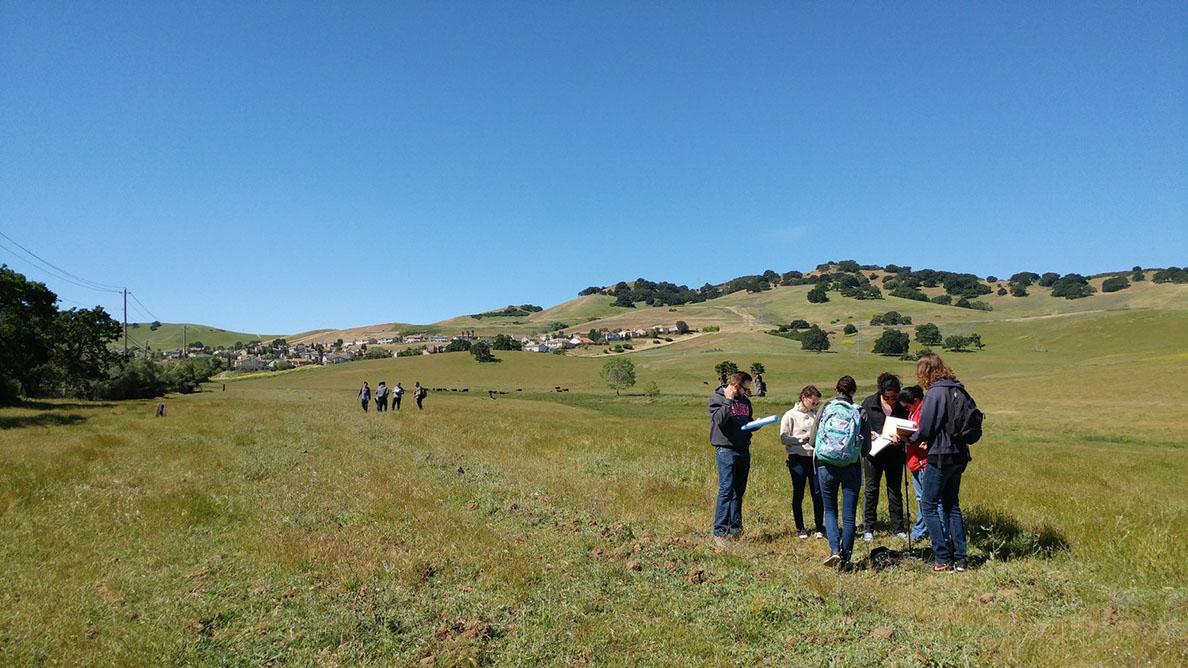
Building an Outdoor Classroom
- BY ROBERT PHELPS
- January 14, 2019
On the southeast corner of Cal State East Bay Concord Campus lies nearly 54 acres of land ripe for exploring.
And thanks to the recommendation of the Academic Senate and President Leroy M. Morishita’s recent approval, the land will now serve as the Galindo Creek Field Station, a biological preserve providing the university community with an on-campus, outdoor site to facilitate scholarship and learning.
According to the National Science Foundation, field stations and marine laboratories are outdoor reserves supporting “research and education conducted in the natural habitats of terrestrial, freshwater, and marine ecosystems.” Such stations enhance academic options “by preserving access to study areas and organisms, by providing facilities and equipment in close proximity to those study areas, and by fostering an atmosphere of mutual scientific interest and collaboration in research and education.”
Cal State East Bay chose the Concord Campus to host the university’s first modern field station in part because of its location within the “wildlands-urban interface.” Otherwise known as a WUI, the interface represents a transitional zone between natural terrain and developed neighborhoods. Wildlands-urban Interfaces have been featured extensively in the news recently, their vulnerability to California’s increasingly long fire seasons resulting in multiple fatalities and billions of dollars in damage. The Lime Ridge Fire of June 2018, which scorched some 10 acres of Concord Campus property, was a reminder that the university’s second campus sits astride this extremely delicate interface.
The field station boundaries encompass two distinct areas — a heavily foliaged riparian zone dominated by Galindo Creek and a sparsely treed grassland that the university leases to a local rancher. Part of the Mount Diablo Watershed, Galindo Creek runs through the eastern edge of campus and supports dozens of native species, including deer, coyotes, bobcats, rabbits, and squirrels, as well as a variety of reptiles, amphibians and birds, some on the California endangered list. To the west, a tributary of the creek forms a wetland area that provides additional habitat for local fauna.
Most of the Concord Campus section of Galindo Creek remains “daylighted,” or free of culverts and paved channels. Some damage has been done however by the destruction of portions of the creek habitat by unauthorized users, as well as the introduction of non-native plants. As most East Bay creeks have been seriously compromised by such consequences of urban development, creek restoration will also present the university with a chance to heighten its role as a regional environmental steward.
Academic uses of the field station include student work and faculty research in the environmental and biological sciences. Faculty-led field trips have already been completed at Galindo Creek by five Hayward-based classes, where students have been engaged in soil sampling, native plant exploration and water quality analysis. Assistant Professor Patty Oikawa is also scheduled to begin research at the field station on how ecosystems interact with the atmosphere.
Although the inaugural uses of the Galindo Creek Field Station have tended towards the natural sciences, the site is open to virtually any proposal that supports the academic mission of Cal State East Bay. Academic disciplines as diverse as engineering, archaeology, photography, art, teacher education and others will have no trouble finding uses for this vibrant and accessible landscape.
For more on the Galindo Creek Field Station, visit http://www.csueastbay.edu/galindocreek/.